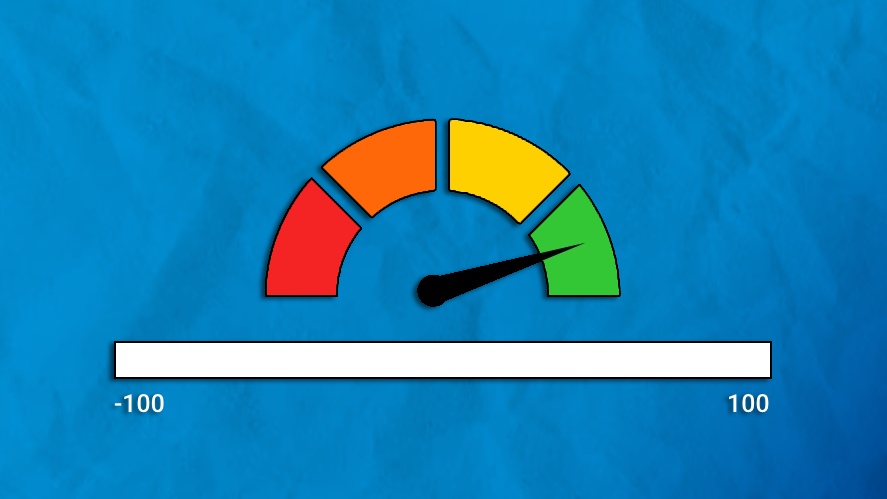
The Benefits of NPS (Net Promoter Score) in Business Growth
Understanding customers is a highly sought-after goal in today’s customer-centric society, which is why businesses increasingly rely on NPS (Net Promoter Score) as a critical metric. It plays a pivotal role in aiding companies to drive growth and achieve success by addressing this concern.
So, what does NPS stand for?
NPS, short for Net Promoter Score, is a business metric that measures how likely customers would recommend a company to their friends, colleagues, or acquaintances.
Based on customer responses on a scale from 0 to 10, companies can categorize customers into 3 groups, which are:
- Promoters (9-10)
- Passives (7-8)
- Detractors (0-6)
With all those group percentages on hand, NPS is then calculated by subtracting the percentage of Detractors from the percentage of Promoters.
This powerful metric can gauge overall customer satisfaction and loyalty effectively, so understanding it can unlock new opportunities for business success in today’s competitive marketplace.
Benefits of NPS for Businesses
Before actually implementing NPS in your business, it’s crucial to capture all the benefits that NPS can bring and how it complements other indicators to improve customer experience.
Closing the Feedback Loop
By providing a structured framework for gathering quick responses from customers’ overall sentiments toward business, the net promoter system facilitates your businesses in better understanding customers’ needs, making proper improvements, and eventually, closing the feedback loop.
Here’s how NPS facilitates this process:
1. Simple and Direct Question
NPS surveys typically start with a simple question: “On a scale from 0 to 10, how likely would you be to recommend our company to a friend or colleague?”.
Since this question only takes a minute to answer, customers are eager to provide quick responses.
2. Open-Ended Question
Following the close-ended question, NPS surveys also often include an open-ended question where customers can explain their previous results. This provides deeper insights into customer sentiment, which can be used to detect areas for improvement.
3. Clear Categorization of Responses
Based on the customers’ responses, they are categorized into three groups: promoters, passives, and detractors. This categorization helps businesses understand how customers feel and drive suitable actions to lift their sentiments.
4. Monitoring and Improvement
As businesses calculate NPS in different periods, they can track changes in customer sentiment over time. By regularly monitoring NPS scores and feedback, companies can see if their improvements are making a difference and adjust their strategies accordingly.
Ease of Use and Benchmarking
One of the key advantages of NPS is its ease of use. As an NPS conductor, you don’t need to be a trained statistician to perform this task.
The straightforward nature of NPS surveys, typically consisting of a single question, streamlines the process for both businesses and respondents. You can effortlessly send it through various channels and calculate it with a basic spreadsheet.
Another advantage of NPS lies in its benchmarking capability.
By identifying NPS, you can see your business position in the big picture of the industry. As such, evaluate your performance, analyze competitor’s scores, identify areas for improvement, and adjust strategies to stay ahead of the competition.
Understanding Customer Loyalty and Growth
NPS is considered one of the success metrics in understanding and improving customer satisfaction and loyalty. When customers rate a company highly on the NPS scale, it indicates a strong likelihood that they are brand advocates who enthusiastically promote the brand to others.
These satisfied customers, known as promoters, become brand ambassadors, helping expand the market reach through word-of-mouth marketing, referrals, and upsells.
To be more specific, they prefer the business’s products or services to friends, family, and colleagues, which results in new customer acquisitions at a lower cost compared to traditional marketing efforts. On the other hand, loyal customers are more receptive to upselling and cross-selling opportunities, leading to increased revenue per customer.
In essence, high NPS scores not only foster customer loyalty but also pave the way for sustainable business growth in today’s competitive marketplace.
Implementing an NPS Strategy
When it comes to effectively integrating Net Promoter Score (NPS) into your business, strategic planning and execution are key to harnessing its full potential.
Survey Distribution
At the beginning, you’ll need to navigate the survey distribution planning, which includes setting up your NPS calendar.
This process requires you to determine the timing and frequency of NPS surveys to be sent to your customers, perhaps quarterly or annually, to assess your customer sentiment over different periods.

Another approach is to send Net Promoter Score surveys after some major customer touchpoints, such as purchases or refunds. By doing this, companies can gather interactive feedback and point out customers’ feelings in specific areas of the overall customer service process.
Survey Channels
After establishing the schedule for NPS surveys, you should determine suitable channels to distribute these surveys effectively to collect valuable feedback from customers and drive actionable insights.
Businesses commonly use various methods to conduct customer satisfaction (CSAT) surveys effectively, including:
- Email surveys: This is a popular method to reach out to a wide audience and collect their NPS feedback. Businesses can send NPS surveys directly to customers’ email addresses, allowing people to answer more considerably at their own pace. However, this can also lead to delays in response time.
- Website surveys: This typically appears as a pop-up or banner on the conversion page. By capturing feedback in real-time, businesses can gather insights from a diverse range of visitors.
- SMS surveys: SMS surveys are sent directly to customers’ mobile phones via text message. This method involves sending a brief NPS question to customers’ mobile phones, along with a request for feedback.
- Phone surveys: This method involves contacting customers directly via phone call to gather NPS ratings. While phone surveys require more resources and humans to do, they are effective in gathering in-depth insights to find direct ways to improve customer experience.
Depending on the characteristics of customers and the features of the industry, it’s crucial to choose the channels that best suit the business’s KPI, and objectives and maximize the reach and engagement of NPS surveys.
Interpreting Scores
Interpreting NPS scores is essential for understanding customer sentiment accurately and deriving actionable insights.
Typically, NPS scores range from -100 to +100.

If your score is above zero, that means you have more promoters than detractors. In contrast, a negative score indicates your business has more detractors than promoters, suggesting areas of concern that need to be addressed promptly.
Scores above 50 are generally seen as excellent. However, good scores can vary significantly depending on the industry and the competitive landscape.
For example, telecommunications or airlines often may have lower benchmark scores compared to industries with higher customer satisfaction levels, such as the hospitality industry.
Overall, understanding the nuance of NPS scores allows businesses to make informed decisions and prioritize initiatives that will have the greatest impact on customer experience and business performance.
Improving Your NPS
NPS journey doesn’t stop after you measure it; it’s a business metric that requires you to track, monitor, and adjust strategies periodically to improve customer satisfaction.
Promoters are brand advocates who willingly share positive feedback and experiences with others. However, it’s essential to note that their advocacy doesn’t negate the need for continued engagement and care. Businesses should execute loyalty programs or referral incentives to foster the relationship and encourage them to stick around over the period.
At the same time, take care of less satisfied customers who are in the passives and detractors group.
By reaching out to detractors promptly, you can pinpoint the areas that need improvement, and improve their issue quickly to enhance the overall customer experience. This can be done by conducting follow-up inquiries, gathering additional feedback, and implementing solutions tailored to their specific issues.
Similarly, passives are equally important as they’re customers who hold an impartial attitude toward brands.
While they may not actively promote or criticize your business, their satisfaction levels can still influence their future purchasing decisions and brand loyalty. It’s better to pay attention to their needs, and effort to exceed their expectations in order to convert them into promoters.
NPS as a Predictor of Business Performance
The importance of NPS also lies in its ability to predict business performance, providing valuable foresight into the relationship between customer satisfaction and overall organizational success.
Revenue and Shareholder Value
High NPS often indicate a stronger connection between customers and companies.
Customers who are promoters tend to repeat purchases and spread positive word of mouth to others to make additional purchases. This results in higher revenue streams, which further contribute to revenue growth and shareholder value.
According to Bain & Company, having a higher Net Promoter Score than your competition can lead to 20-60% of a company’s organic growth.
Operational Efficiency and Customer Loyalty
NPS serves as an invaluable tool for businesses to gauge the effectiveness of operations and identify areas for improvement.
Through analyzing NPS scores, businesses can pinpoint areas where they excel and areas that need attention. For instance, high NPS scores often indicate efficient processes, while lower scores may highlight issues in customer service or product quality.
As a result, by leveraging these NPS management, businesses can find ways to improve operational efficiency to increase customer loyalty, and, ultimately, foster a positive brand reputation.
Challenges and Limitations of NPS
Although NPS is a widely used metric for measuring customer satisfaction and loyalty, it also comes with challenges and limitations for businesses.
There are two challenges:
1. Customer Tolerance Levels
Businesses should understand how different industries affect customer tolerance levels. This metric indicates how customer are likely to be angry or dissatisfied if their expectations aren’t met by the company.
For instance, customers in industries like healthcare and airlines typically have lower tolerance levels compared to sectors with lower stakes, such as online fashion retailers.
2. Beyond the Score
While NPS provides valuable insights into customer satisfaction, it’s essential to go beyond the score to quantify performance accurately.
Businesses should follow up with additional questions and qualitative feedback mechanisms to uncover specific issues or preferences that NPS scores alone may not capture.
Final Thoughts
NPS is a crucial tool for businesses to gauge customer satisfaction and loyalty. By understanding the importance of NPS, businesses can take proactive steps to implement and benefit from it effectively.
However, making the most of NPS is not solely about implementing NPS surveys; it’s necessary for businesses to capture all the information, from the Net Promoter Score definition, to how to find Net Promoter Score, and how to work out NPS and consider all the limitations behind it to drive the most efficiency.
